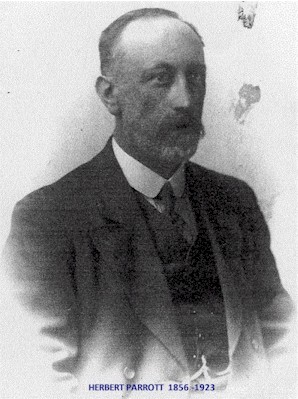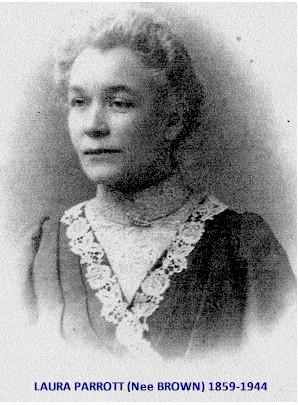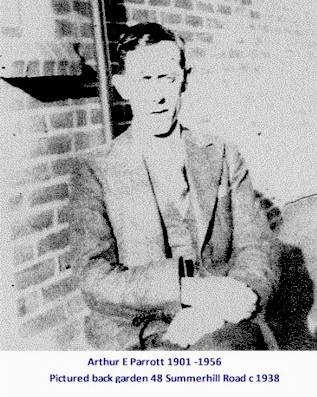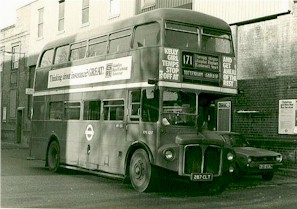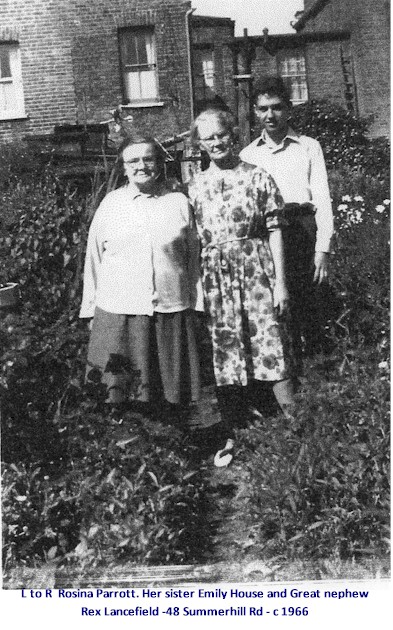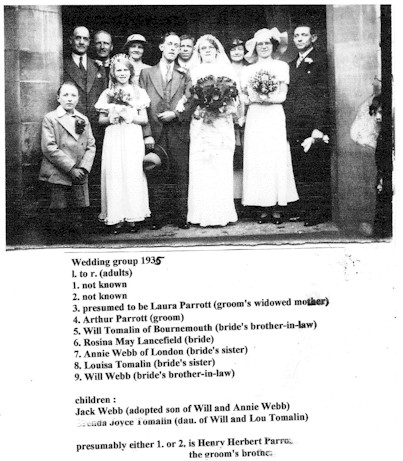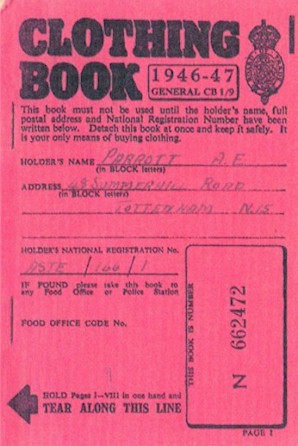|
Herbert Parrott – a postman, born 1856 at Torriano Terrace, Kentish Town, son of John Parrott (bookseller) and Ann (nee Allen). Married 1879 at Hackney to : |
|
Laura Brown – of 13 Moscow Terrace. Born about 1859 at Fifield, Berkshire, son of Henry Brown (labourer). Her brother, James Brown was Head Verger at St. Paul’s Cathedral for nearly 42 years, retiring in 1912 to return to his native county of Oxford (according to news cuttings). It is believed she had other brothers as I have been told one was a soldier, one a marine and one in the Royal Navy. |
| Herbert and Laura Parrott are reputed to have moved to 48 Summerhill
Road in 1913. Both lived there for the remainder of their lives, Herbert Parrott dying in
1923 and Laura in 1944. How many of their children moved to Summerhill Road is not known but in the census of 1911 the family is shown as living at 31 Brooksby Street, Islington. In addition to the parents, there were four children : Edith Parrott aged 29; Florence Amy Parrott aged 24; Henry Herbert Parrott aged 23 and Arthur Ernest Parrott age 10. Florence’s married name was Prior and her name appears on the receipt from a monumental mason for providing a memorial for her mother in 1945. Henry Herbert Parrott - son of Herbert and Laura Parrott, remained single and died at 48 Summerhill Road in 1952. His occupation on the death certificate is given as ‘Radio Manufacturer’s Storekeeper’. In the 1911 census he was stated to be a Printer, monotype. I have some memory of being told he worked in a hotel in London as a waiter and also that either he or another close relative had worked as a cabinet maker in a piano manufacturers. There was a wooden shed in the garden at number 48 Summerhill Road with a workbench and various tools and it was in talking of this that the mention of cabinet making came up. |
|
|
Arthur Ernest Parrott – born 1901, son of Herbert and Laura Parrott. Self employed electrician. He met his future wife while carrying out work at a convent (C of E, I believe). Died about 1956. Married 20 April 1935 to : |
|
Rosina May Lancefield – born 1899 in Pokesdown, Bournemouth, last of 14 children of Joseph Thomas Lancefield, a journeyman house painter (who had been born in St. Marylebone in 1848 and settled in Bournemouth after serving in the army). A laundress by occupation but also worked as a cook in a doctor’s house in Bournemouth for a while before moving to London. Her sister, Annie was already living in London (see below). While in London she and her sister Annie (Webb) worked as ironers in a convent where Rose met Arthur Parrott |
| Arthur and Rose lived at 27 Ravely Street, Kentish Town following their marriage in 1935, then moved to 48 Summerhill Road a few years later – possibly following the death of Laura Parrott in 1944. They had no children. Rose died in July 1981 but by this time had moved into some old peoples’ flats on the other side of Summerhill Road | |
|
Emily Eliza House – born Boscombe, Bournemouth in
1891, sister of Rosina May. Also a laundress by occupation, she moved to London to work in
a munitions factory during the First World War, living with her married elder sister Annie
Webb (born 1884, Iford, Bournemouth) and her husband Will Webb (laundry mechanic). Whilst
working in the munitions factory, Emmie met her future first husband, Bernard James Kay
who had been classified as unfit for active service. They married in 1918 and settled in
Bournemouth. Bernard Kay died in 1934 and then in 1935 Emmie remarried to Alfred House of
Christchurch, a widower and a gardener by trade. She did not have any children by either
of her husbands. After Alf House died in (? 1951) Emmie lived with two other of her
sisters at Jumpers (a district in Christchurch) then after they had both died (1951 and
1952), she moved to London with her sister and brother in law, Annie and Will Webb. After
Annie died in late 1967, Emmie moved from the home at 105a Uxbridge Road, Hanwell (a flat above a chemist’s shop) to live with her sister Rose at 48 Summerhill Road. She died in November 1970 |
